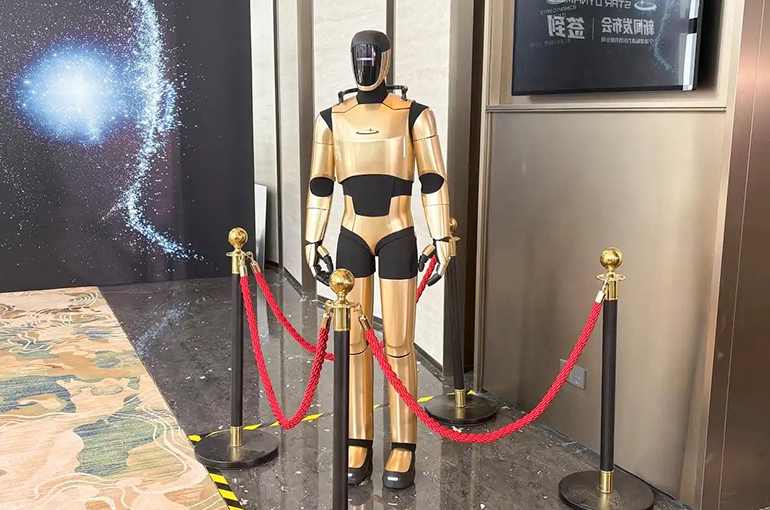 China's Star Dynamics Unveils First Humanoid Robot
China's Star Dynamics Unveils First Humanoid Robot(Yicai) Nov. 4 -- Star Dynamics Technology, a robot maker recently set up by Hongrun Construction Group and Matrix Super Intelligence, founded by Zhang Haixing, the former head of Tesla's China design center, has released its first android.
The Star Dynamics No. 1 looks more like a real person compared with other Chinese humanoid robots, having no exposed cables or joints, Yicai noticed at an event marking Star Dynamics' entry into its office in Qianwan New Area in Ningbo yesterday. Its coating is similar to the golden version of Tesla's Optimus version 2.5.
Hongrun Construction and Matrix Super Intelligence set up Star Dynamics on Sept. 19, with the former holding a 60 percent stake and the latter the rest, according to corporate information platform Tianyancha. The pair had inked a deal to establish a joint venture to research, develop, produce, and commercialize humanoid robots in early September.
"Star Dynamics is benchmarking against full-sized humanoid robots in North America, including Figure, Optimus, and 1X Technologies' products," Zhang told Yicai. Figure and 1X have been exploring some home scenarios, but "it's more about drawing a blueprint," he said, adding that the robot tech and supply chain still need time to develop to achieve actual home use.
A truly intelligent robot should be able to communicate smoothly with people using natural language rather than relying on complex instructions, Zhang pointed out.
"Through our self-developed architecture, we have compressed the most core control code from hundreds of thousands of lines to less than 3,000 lines," Zhang noted. The fewer the lines of code, the lower the probability of errors, and the more stable and reliable the system gets, he said, adding that "this is the key to large-scale mass production."
Star Dynamics' position in the new round of humanoid robot competition will likely be determined by how it seizes technological and mass production opportunities before the supply chain matures, according to Zhang.
"Mass production means that the hardware needs to be easy to mass-produce and maintain and be able to conduct performance optimization to adapt to different scenarios," said Zhang. Systematic engineering capabilities and the speed of industrial collaboration will be the key to competition between robot makers, he stressed.
Tesla has not achieved large-scale mass production, with the US firm reportedly lowering its annual production target for Optimus to 2,000 units from 5,000 units due to serious technical challenges in the design of hands and forearms. The firm has not commented on the matter yet.
Editor: Martin Kadiev